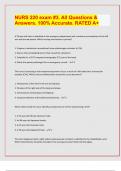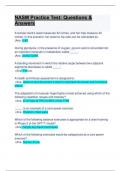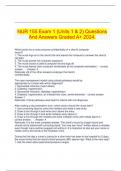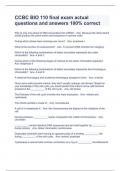Examen
NURS 220 exam #3. All Questions & Answers. 100% Accurate. RATED A+
- Cours
- Établissement
NURS 220 exam #3. All Questions & Answers. 100% Accurate. RATED A+ A 78-year-old client is admitted to the emergency department with numbness and weakness of the left arm and slurred speech. Which nursing intervention is priority? 1. Prepare to administer recombinant tissue plasminogen act...
[Montrer plus]






